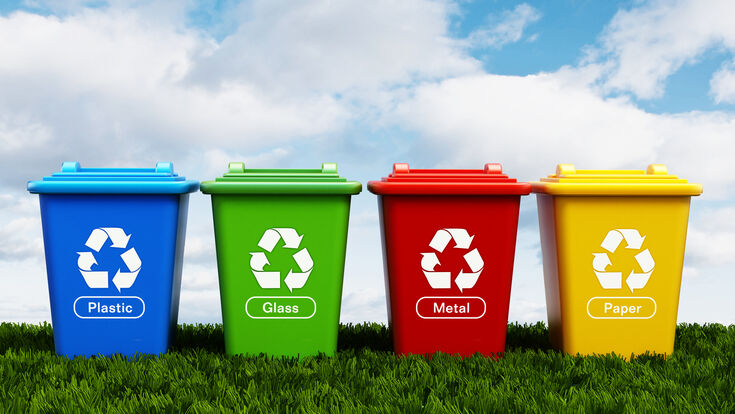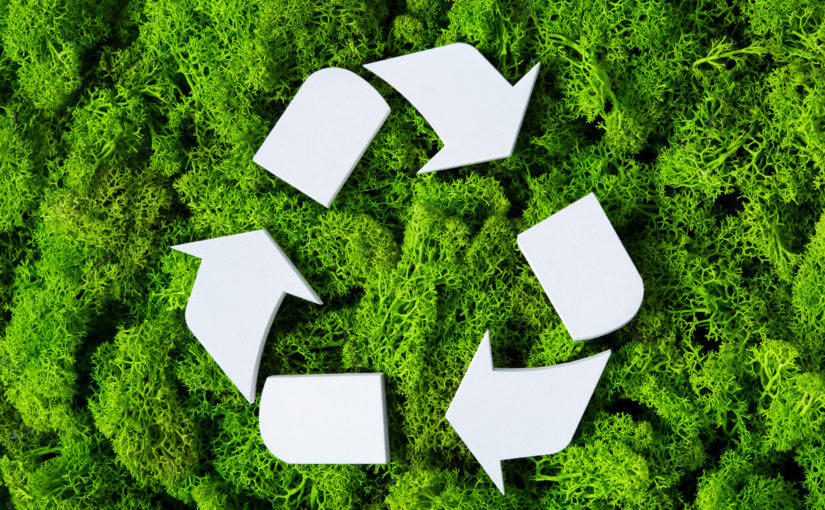Recycling Lives Services: A Total Option for Business Recycling
Recycling Lives Services: A Total Option for Business Recycling
Blog Article
Checking Out Various Kinds Of Waste in Modern Waste Monitoring Systems
The modern landscape of waste monitoring entails navigating an intricate range of waste kinds, each calling for specialized handling and disposal methods to reduce environmental influences. Community solid waste, unsafe waste, digital waste, and natural waste each present unique difficulties and possibilities for source recovery.
Municipal Strong Waste
Municipal strong waste, commonly described as family trash or rubbish, encompasses a selection of disposed of materials generated by property, business, and institutional sources within a town. This waste stream generally includes products such as packaging, food scraps, yard trimmings, paper, plastics, textiles, and discarded home products. The management of community solid waste is a crucial part of city planning and public wellness, necessitating efficient collection, transportation, and disposal systems.
Reliable waste administration systems are designed to minimize environmental influence while making the most of resource recuperation. This usually entails a mix of approaches consisting of landfilling, composting, and recycling. Reusing programs target materials like paper, glass, steels, and certain plastics, diverting them from landfills and reestablishing them right into the production cycle. Composting organic waste, such as food scraps and yard trimmings, not only minimizes landfill usage however additionally produces useful dirt amendments.
Municipalities should additionally address the logistical and financial difficulties related to waste administration. Executing pay-as-you-throw systems, boosting public awareness, and buying innovation can substantially improve waste diversion rates. By integrating these practices, communities can foster sustainable areas, decrease greenhouse gas exhausts, and conserve natural deposits.
Hazardous Waste

Reliable contaminated materials management entails numerous important actions: identification, partition, disposal, and treatment. Identification involves the category of waste based upon its dangerous homes. Segregation makes certain that unsafe materials are stored individually from non-hazardous waste to stop cross-contamination. Treatment techniques, such as chemical neutralization, incineration, and stablizing, are used to lower the poisoning, quantity, or mobility of the waste. Finally, disposal alternatives, consisting of safe garbage dumps and underground storage, are picked to make certain long-lasting containment.
Governing frameworks, such as the Resource Conservation and Recuperation Act (RCRA) in the United States, supply guidelines and criteria for contaminated materials monitoring. Adherence to these policies, paired with developments in waste therapy modern technologies, is important in alleviating the risks connected with harmful waste.
Electronic Waste
Digital waste, commonly described as e-waste, represents a swiftly expanding difficulty in waste administration systems worldwide. This sort of waste encompasses thrown out digital gadgets and devices such as smart devices, computers, tvs, and other electronic home appliances. The rapid speed of technological advancement, coupled with reducing item life-spans and consumer demand for the most up to date devices, has tremendously raised the quantity of e-waste generated every year.
E-waste is especially troublesome because of its intricate structure, usually including unsafe materials like lead, cadmium, and mercury, which present significant ecological and health threats otherwise appropriately handled. Conversely, e-waste likewise contains useful materials such as copper, silver, and gold, which can be recovered and recycled. The twin nature of e-waste-- both valuable and dangerous-- requires customized handling, reusing, and disposal processes.
Efficient e-waste monitoring includes rigorous regulative frameworks, durable collection systems, and advanced reusing modern technologies. Public recognition and engagement are vital, as improper disposal techniques, such as illegal dumping and casual recycling, aggravate environmental contamination and wellness risks. Boosting e-waste monitoring practices is essential for alleviating environmental impact and recovering valuable sources in a progressively digital globe.

Organic Waste
Organic waste, making up cooking area scraps, lawn trimmings, and farming deposits, stands for a substantial portion of the worldwide waste stream. This kind of waste is biodegradable, meaning it can be damaged down by microorganisms right into simpler organic compounds. Regardless of its possibility for natural decay, inappropriate administration of organic waste can bring about unfavorable environmental influences, including the exhaust of greenhouse gases such as methane, which add to climate modification.
Reliable monitoring of natural waste is important for minimizing these ecological effects (recycling lives services). Composting is a commonly adopted approach, changing organic waste into nutrient-rich garden compost that can improve soil health and farming efficiency. Additionally, anaerobic food digestion is an arising innovation that transforms organic waste into biogas, a renewable resource resource, and digestate, which can be made use of as plant food
Municipalities and waste management entities should apply robust organic waste see here now collection and treatment programs to maximize the advantages of these procedures. Public education and learning campaigns can also play a critical function in encouraging families and businesses to different natural waste from various other types of waste. By prioritizing the monitoring of natural waste, societies can lower land fill use, lower greenhouse gas discharges, and produce beneficial by-products for agricultural usage.

Ingenious Waste Management
In the realm of waste management, cutting-edge methodologies are transforming just how cultures manage their refuse, intending for sustainability and efficiency. These improvements incorporate a read what he said variety of technologies and practices that enhance recycling rates, decrease garbage dump reliance, and lower environmental impact. One prominent technology is the implementation of smart waste bins geared up with sensors that monitor fill degrees and optimize collection paths. This not just decreases gas intake however likewise decreases greenhouse gas discharges.
One more remarkable growth is the adoption of waste-to-energy (WtE) technologies. By transforming non-recyclable waste right into functional power through procedures such as incineration and anaerobic food digestion, WtE lowers landfill problem and offers a sustainable power resource. Improvements in chemical recycling permit for the malfunction of complex plastics right into their original monomers, enabling the creation of new, top quality plastic items.
In addition, the round economic situation model is obtaining traction, emphasizing the layout of products and systems that prioritize reusability and resource effectiveness. This all natural approach encourages industries to minimize waste generation from the beginning. With these cutting-edge strategies, contemporary waste monitoring systems are not only resolving the immediate difficulties of garbage disposal yet also leading the way for an extra sustainable future.
Verdict
A detailed understanding of community strong waste, contaminated materials, digital waste, and organic waste, paired with the execution of cutting-edge waste monitoring remedies, is vital for mitigating ecological influences. Incorporating modern technologies such as smart waste containers and waste-to-energy systems can boost effectiveness and sustainability. Reliable waste management approaches not only foster source recovery but additionally promote public understanding and engagement, eventually adding to the advancement of a round economic situation.
The contemporary landscape of waste administration includes navigating a complex range of waste types, each requiring specialized handling and disposal techniques to alleviate ecological influences. Local strong waste, dangerous waste, electronic waste, and organic waste each existing unique difficulties and opportunities for source healing.Electronic waste, frequently referred to as e-waste, represents a rapidly growing difficulty in waste management systems globally. With these cutting-edge techniques, modern waste administration systems are not just resolving the immediate difficulties view it now of waste disposal but likewise leading the way for a more sustainable future.
A thorough understanding of community strong waste, harmful waste, digital waste, and organic waste, combined with the application of ingenious waste monitoring options, is essential for mitigating ecological impacts. (recycling lives services)
Report this page